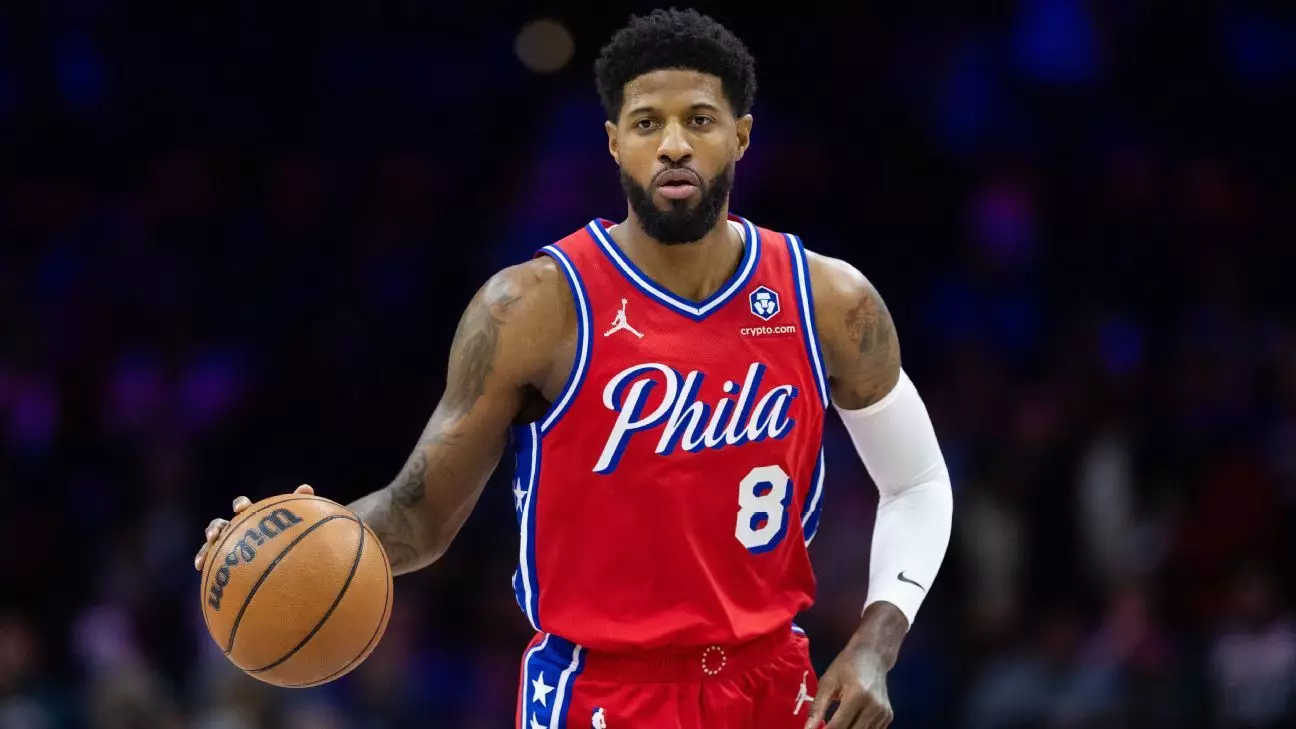In the unpredictable world of professional sports, few narratives are as dispiriting as that of Paul George’s deteriorating health. The 34-year-old forward for the Philadelphia 76ers is caught in a seemingly unending cycle of injuries—groin, knee, finger—each one compounding the last and casting a long shadow over both his career and the team’s aspirations. The most frustrating element of his situation is not merely the specter of injury itself but the frequency and severity of these setbacks, culminating in George now looking to doctors for treatment options. The choice of whether to pursue a procedure speaks volumes about his current state and the urgency behind it.
Status Quo: A Franchise in Decline
The current landscape for the 76ers appears bleak. George’s presence was intended to bolster the team; yet, with the league MVP Joel Embiid sidelined, the burden of leadership has fallen heavily onto a fragile foundation. The 76ers, with a record of 22-43, have slipped into the depths of mediocrity, oscillating between the sixth and seventh worst records in the league. This isn’t a team—it’s a shell of what was once anticipated to be a championship contender. The top-six protection on this year’s draft pick illustrates just how precarious the team’s future is. Should they fail to secure a mid-lottery pick, they not only suffer immediate losses but compound their misfortune by sending talent to Oklahoma City.
Financial Implications and the Future
George’s hefty four-year, $212 million max deal weighs heavily on the franchise’s budget and future decisions. For a player grappling with repeated injuries, the investment feels like throwing money into a furnace. How can a team navigate its long-term strategy when its marquee players are consistently absent? As George consults with medical professionals about his next steps, the franchise must also ponder the implications of his declining health on team dynamics and chemistry.
Pursuit of Identity Amidst Chaos
Adding to the complex narrative is George’s recent decision to step back from his podcast, “Podcast P with Paul George,” indicating an unsettling prioritization of health over personal branding and engagement with fans. This move reflects a grave understanding of the moment; George has recognized that his personal wellness is integral not only to his career but also to reviving the 76ers’ season. His words echo a sense of duty, capturing the idea that he must sacrifice individual pursuits for the collective responsibility of rejuvenating a fledgling team.
As fans and analysts speculate about George’s next steps, the reality is that the combined challenges of his injuries and the 76ers’ current state underscore a more significant issue within the NBA: maintaining player health is becoming increasingly complex. The reality of a fleeting window of opportunity for franchises like Philadelphia calls for a reevaluation of how we perceive talent and the implications of injury on a team’s trajectory. The question remains—can George overcome his injury struggles to reclaim not just his form, but some semblance of hope for a franchise that seems to be spiraling out of control? Only time will tell.

